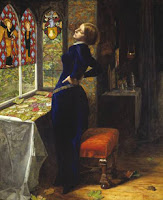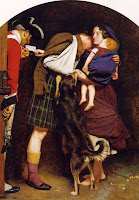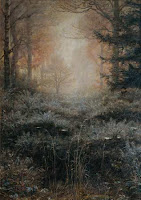The Tate Gallery in London is currently holding an art exhibition with works by John Everett Millais and I jumped at the opportunity to see in person, the many paintings that I have loved for so many years.
Millais (1829–1896) was a British painter who at the age of eleven entered the Royal Academy of Art schools, and remains to this date, their youngest ever student. He was one of the founders of the Pre-Raphaelite Brotherhood and one of the most famous and successful British artists.
The Pre-Raphaelite Brotherhood was a Victorian Art movement founded by a group of artists that wished to return to the aesthetic experience that existed before Raphael, (the Renascence artist), hence the name pre-Raphaelite. They were part of the Romanticism which was a movement in the arts, literature, music, which tried to express strong emotion as a source for art, a need to study nature as it was, untamed and yet picturesque, along with a fascination with the medieval world and who often produced works that were linked to literature. (Note: This is a very limited summary of a very important movement who is supposed to be a response to the enormous social, industrial, etc transformations happening in Europe at that time.)
The show follows his life from the earlier stages of the Pre-Raphaelite brotherhood to the great Landscapes the he painted later on. As far as the exhibition goes it is the most stunning show I have ever seen. I was completely mesmerised by the collection on display.
Here are some of my favourites:
Marianna
Tate says: The inspiration for this painting came from Tennyson’s poem Mariana (1830), itself derived from Shakespeare’s Measure for Measure. Mariana has been rejected by her fiancé Angelo and leads a solitary life in a moated grange. Millais shows her torn between spiritual seclusion and feelings of physical yearning. The large silver vessel on the altar appears again in The Bridesmaid and the drawing St Agnes’ Eve in this room, both of which also depict erotic longing.
I stood in front of this painting for a good 15 minutes completely taken by both the inner qualities of the painting and what it proposes to depict and the fact that everything in it is so vivid – the colours of the room, the dress and I was completely overwhelmed when I realised that my EYES were showing me how the velvet of her clothes and the stool would FEEL. Very disturbing but in a good way.
Tate says: This picture depicts a scene following the Jacobite defeat at Culloden. Effie Ruskin posed for the Scotswoman with a written order freeing her wounded husband from an English jail. Her expression is a masterpiece of psychological intensity, her drained features revealing defiance and subjugation, as her husband and son collapse against her. Details such as the spray of the dog’s tail and child’s hands show Millais’s mastery of realism in the service of emotional intensity.
I love Scottish history and was taken with emotion when I saw this. We can see the strength and resilience of this woman, holding everything that she loves in her hands, supporting and comforting them.
There were many many other amazing pieces, which I knew and recognised, but the final room was a complete surprise to me as it contained superb landscapes that I have no idea Millais had produced. Like this one:
Dew-Drenched Furze
It reminded me a lot of Turner, which is my favorite landscape artist. I left Tate feeling like I was floating in the air. Thoroughly satisfied.
Next: Still on the topic of Romanticism, review and thoughts on The Sorrows of Young Werther.












No Comments